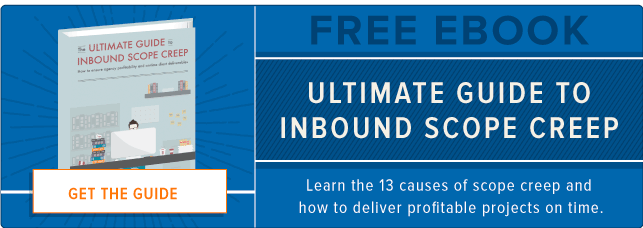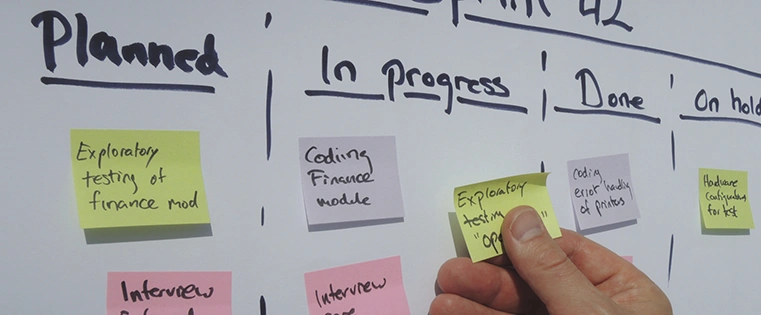

Defining a project scope is one of the most challenging aspects of beginning a new project because the only thing you can know for certain is that the project will change. There’s no perfect process for defining the scope, even if you create processes and hire highly trained professionals.
You need to be prepared for scope creep to occur. It’s a given that your vision, your team’s vision, and the client’s vision of the outcome of a project will not match up -- in addition to the fact that the day that you scope the project is when also when you are least knowledgeable about the technology, skills, and requirements of the project.
To prepare your team to prevent scope creep and to be proactive about solving what might seem like a small problem at first, consider these four early warning signs.
4 Warning Signs of Impending Scope Creep
1) The decision-maker is not involved in the project.
It’s a common problem: The agency is working through a project and sends over initial work for review. The decision-maker, who gave the project to one of his team members to manage, sees the work and decides it is completely off-base or off-brand.
When working on a project, you need to know who makes the final decisions, and even if he is not involved in the day-to-day management of the project, you need a clear understanding of this person’s vision so you can obtain buy-in on the direction of the project. Interview this person up-front to understand his pain points and goals. This way, you can include updates and information to show how the project’s final outcome will meet the brand’s business goals. The client may not want specifics, but he does want reassurance that his budget is being well-spent.
2) Requirements for the project are not clearly defined.
Before you begin any project, you need to clearly define the project -- both what will be included and oftentimes, what is not included.
You should be able to answer:
- What are the objectives (goals and vision) of the project?
- What are the specific deliverables?
- When will each deliverable be completed?
- What does the review and approval process look like?
- What happens if the project scope changes?
Without answering these essential questions, it is easy for a project to become mismanaged, for clients to feel disengaged from the work, and for out-of-scope requests to become the norm.
3) Initial milestones have been missed.
If the client misses the initial project deadlines (e.g., they need to deliver copy before you can begin the design phase), it signals that the client team is not making the project a priority, which will cause the project deliverables to be continually pushed back and may impact other projects on your schedule.
To turn things around, it may be as easy as explaining to the client that delays in the initial phase of the project will cause complications in the future as you will have to adjust other deadlines, including the final delivery date. It might also mean that the client doesn’t clearly buy into the project or doesn’t understand the cost of inaction. For example, you could explain how the goal of the new website is to increase conversion rates by 5%, and by delaying the site relaunch by one month, the client could lose out on X number of clients.
The more the timeline is extended for a project, the higher the chances are that the project will go over-budget.
4) Roles and responsibilities are unclear.
Projects that are not managed well will inevitability run over-budget and be delivered late.
Project or account managers need to be vigilant about setting deadlines, monitoring these deadlines, and communicating with those involved. The project manager should always know what is being worked on and by whom and when the deadline for that milestone is.
You should also have a process for communicating project updates, whether this is through email, over a conference call, through a project management tool, or during a meeting. The staff member should outline what is being worked on that week, if any part of the project is at-risk, how the project is progressing according to the initial budget, and what project milestones are on the horizon and who is responsible.
Communicating clearly and consistently with both the client and the agency team is the most important thing your project manager can do to prevent scope creep.


![7 Skills and Platforms Every Digital Project Manager Should Master in 2022 [+IG]](https://blog.hubspot.com/hubfs/digital%20project%20management.jpg)





